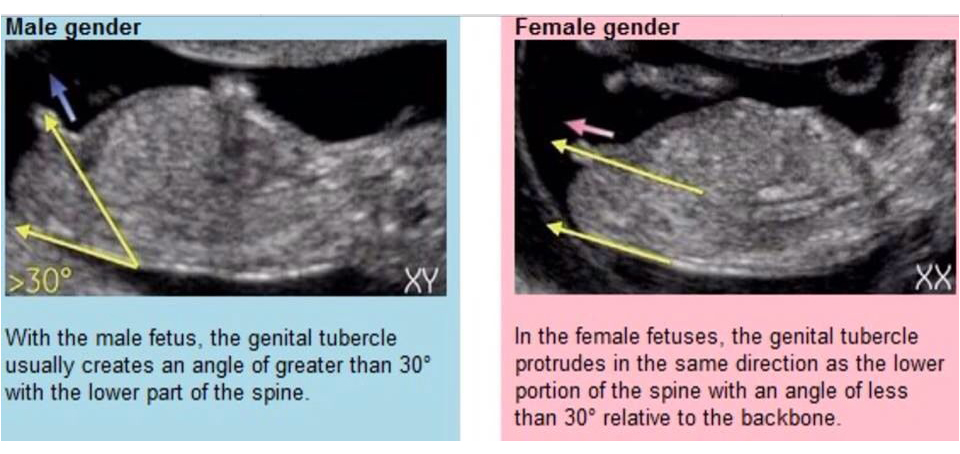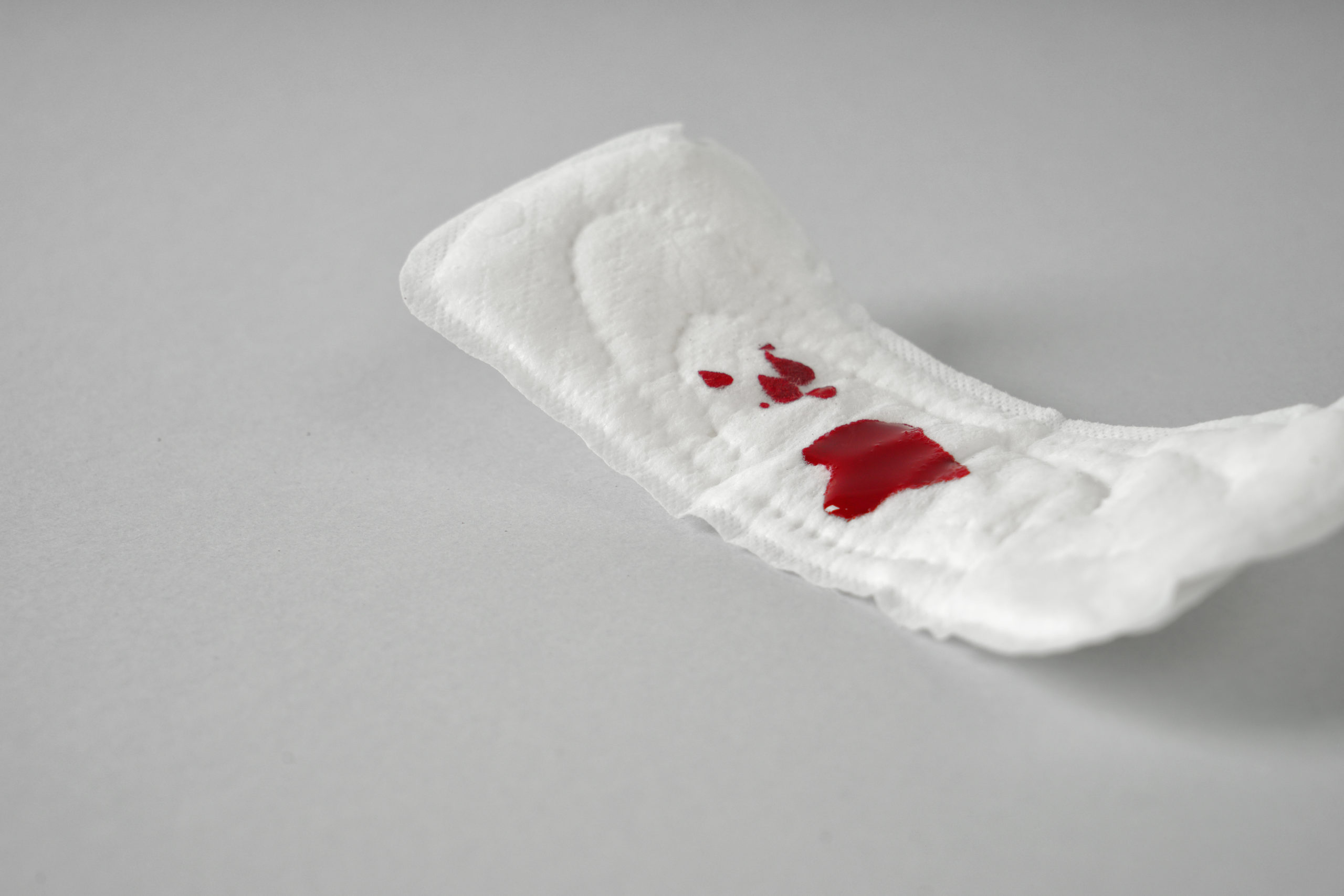The main reason for having a baby gender ultrasound is to determine the health and well-being of your baby. Having said that, it is only natural that the parents would want to learn her baby s sex as well. An amniocentesis is a medical, prenatal procedure that is used to test for risk of fetal abnormalities (birth defects) like down syndrome, cystic fibrosis or spina bifida; an amniocentesis can tell you whether your baby has a genetic disorder by analyzing fetal cells that are found in amniotic fluid, from about 15 weeks of pregnancy. You can learn more on amniocentesis and the associated risk in this article. Similarly, chorionic villus sampling (CVS) is another prenatal test that is used to detect birth defects in pregnant women, including genetic diseases.
While prenatal screening tests, including blood tests and ultrasounds, can tell parents if their baby has a riskof a disorder, wanting to know your baby s gender and when it can be identified is probably one of the most common first requests at an ultrasound appointment. In addition to ultrasounds, it is possible to know if you’re having a boy or girl through a urine test or through sexing, but for the purposes of this article, we will examine sexing through ultrasound.
Unfortunately, there isn’t one easy answer for moms-to-be. Identifying the baby s genitalia depends on a number of factors. For example, the fetal position can make it difficult, if not impossible, to see the baby’s gender. The appearance of genitalia (i.e. penis or clitoris) will also depend on your baby’s gestational age. Currently, we know that the diagnosis of sex is inaccurate until the 12th week of pregnancy — after the 13th week of pregnancy, it can reach 99 to 100% accuracy.
The gestational age tables vary from population to population, so it is preferable to use the size of the fetus (not the gestational age) to determine whether your baby is a boy or a girl. Fetuses over 72 mm that are in the right position with a clear image on the monitor will allow your technician / doctor to reveal the sex with nearly 100% accuracy.
How does the doctor know the baby’s sex?
A sonographer specializes in the use of ultrasonic (sound waves) imaging devices to produce diagnostic images, scans, videos or three-dimensional renderings of anatomy. During your pregnancy, an ultrasound technician should be able to look for and see the genital tubercle from as early as the 13th week – the structure that will develop into a penis for a boy and a clitoris for a girl. The site and positioning of the tubercle in a girl is horizontal (parallel to the spine), while in a boy it is vertical before developing into an penis (perpendicular to the spine), as shown in the image below. Medical ultrasounds are about 99 percent accurate in determination of the baby s gender.
Below is a slightly adjusted image of the genitalia to show the difference between boys and girls during pregnancy (not always easy to identify on ultrasound). Contrary to popular belief, the fetus’ heart rate does not determine the sex of your baby.

What can impede finding out the sex of your baby?
In addition to the baby’s position during pregnancy and the size of the fetus, there is more than one medically reviewed factor that affects baby gender identification, including:
- Sign of maternal obesity
- Site of previous abdominal surgeries
- Weeks of pregnancy
- Risk of fetal abnormality
- Uterine positioning
- Fetal positioning
- Quality of the medical ultrasound device used
If your doctor has said he is having difficulty determining the sex of your baby during an ultrasound, it might be too early and it’s probably best to have the test done on another day. Remember that you will get additional ultrasounds between 11 and 14 weeks to measure the nuchal translucency. When you schedule this exam, you can measure nuchal translucency at that time and have at least a good idea of your baby s gender, in addition to important information about your baby s well-being.
CAUTION: The correct time to measure nuchal translucency is when the fetus is between 45 and 84 mm in length from head to buttocks. So it’s important not to schedule your exam at the end of 14 weeks, as the fetus may have passed the appropriate measurements to determine nuchal transparency.
When can parents find out the baby s gender?
Look at your calendar to count the gestational age. Note that not every month has 4 weeks; as the interval between 13 and 14 weeks is very short, this small difference can cause you to miss the one window that measures nuchal translucency. If you are in doubt, read this article to find our gestational age calculator. You may also like this article on converting months to weeks to make sure said calculations are accurate.
Until you find out the sex of your baby, you may decide not to get baby clothes for now. Regardless of when you determined the sex of your baby, you’ll want to wait for a second test in the list of ultrasounds (called the morphological exam), between 20 weeks and 24 weeks. After the prenatal morphological examination results, your ultrasound technician can confirm the sex of your baby with 100 percent accuracy — go ahead and find his first trousseau!
Is there a trick to choosing the sex of the baby before becoming pregnant?
Throughout history, women have done peculiar things in the name of pre-determining the gender of their baby. Despite old wives tales, in naturally conceived pregnancies early gender selection is not possible; there is no universal sign that will ensure your baby has a penis, no food that will determine the sex of your child. Your ob gyn cannot ‘make’ you conceive a baby boy or get a ‘girl ultrasound’ with exclusively ‘female sound waves’. There is no medically reviewed, scientific sign that your lifestyle choices will affect if you’re having a boy or girl. From time to time we hear that there may be a difference in the speed of the sperm that carries the X chromosome and the sperm that carries the Y chromosome. It is said that this, in theory, may affect the gender, but is not a prediction; there is no scientific evidence used to support this claim, and no way for your ob gyn to test it (through blood tests, etc.) So having sex farther or closer to ovulation is not an accurate way to determine or learn the sex.



